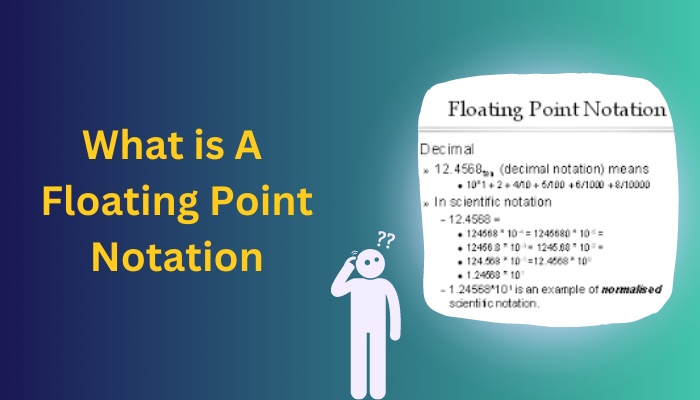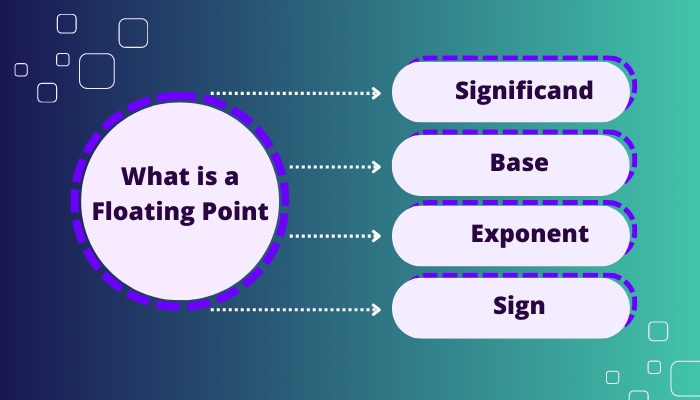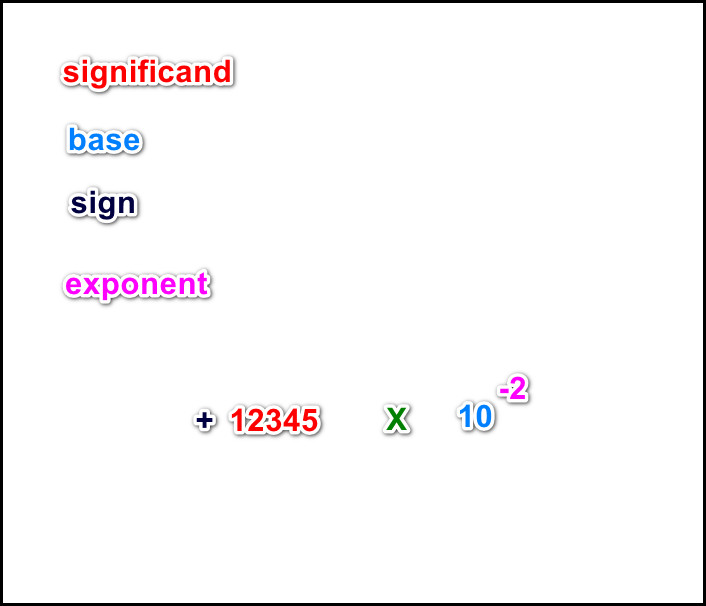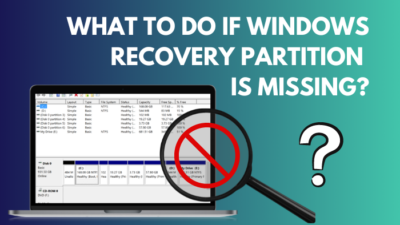There are an infinite amount of numbers theoretically, and they will never end even if all the people in the world start counting from a specific point till they become extinct, then another person starts counting from that point till their death, and the cycle goes on.
But there are different types of numbers due to their characteristics. A floating point is one of those types. It has some unique characteristics that define and segregate these numbers from the rest.
Here I am going to explain floating points in detail, along with examples. So, make sure you are following me till the end. Without further ado, let us dive into it.
What is a Floating Point?
Floating points are a type of number without a fixed decimal point. This means the decimal point can be moved from its place within the significant digits without changing the value of that specific number. Thus the name floating point came to be.
There are some parts to floating point numbers. These are a must to know the number itself. They are as follows:
1. Significand
The significand is the whole number without the decimal point. This is essentially the main part of a floating point number. After taking the decimal point, the remaining is an integer number. The decimal point signifies the true value of the floating point.
2. Base
The base is the number multiplied by the significand to fix the decimal point to a place within the significand. It determined the value of the number by fixing the floating point. It also has a part known as the exponent.
3. Exponent
The exponent is the power portion of the Base. The base is used with a power of an integer number. The base and exponent define the place of the decimal point within the Significand.
4. Sign
All floating point numbers have a sign. It can be either negative or positive. With the same significand, base, and exponent, there can exist another floating point number that is of a different sign.
Why is Floating Notation Important?
Floating notation is important because they represent noninteger fractional numbers easily and precisely. For this preciseness, they are highly used in Engineering and technical calculations.
Another advantage of floating notation is that using the same number of digits; it can specify a large range of numbers precisely. This makes it easier for computers and microcontrollers to use floating point notation and store large amounts of data within limited resources.
As there are limitations of resources, computers must represent real numbers with a finite number of bits. You all know that numbers are infinite. So, representing infinite numbers with finite bits should be hard. But this is where floating notation comes into play.
The same characteristics have made it highly efficient in Artificial Intelligence hardware. So, hardware efficiency is another reason to use floating notation. A new floating notation type is also being highly researched due to more precise, hardware-efficient, and fast calculations.
What is a Floating Point Number with Examples?
As said before, a floating point number must have 4 parts according to IEEE 754 standard – sign, significand, base and exponent. For example, +12345×10^-2 is a floating point number. The significand is 12345; the base is 10, -2 is the exponent and + is the sign. The value is written as 123.45, which is expressed by the number +12345×10^-2.
Another example might be -0.00093×10^4, where the sign is minus, signifying the number as negative. The significand is 93; the base is 10 with an exponent of 4. The value is 9.3, which consists of fewer digits than the IEEE 754 standard mentioned before.
For your convenience, the parts and examples are highlighted in the same color in the image below. 
What are the Limitations of Floating Point Notations?
Although there are various advantages of floating point notations, there are a few limitations. The major one of them all is that the precision drops when the number of bits is fixed due to hardware limitations. So, the more significant bits there are, the more precise the number will be.
But due to hardware limitations, the significant bits need to be limited, making the floating notation’s accuracy questionable when exceeding the number of significant bits.
Again, to represent a smaller number, the floating notation will use all the resources, i.e., all digits are used. This uses computational power, and calculations become lengthy.
If you want to see how Floating notations are visualized, you should see this. 
FAQs
1. What is a floating point in programming?
In programming, a floating point is a variable type, and it is used to store the value of floating point numbers. So, it works as normal variables function-wise but stores floating point values only.
2. Should I use float or double?
Float uses less memory than double but sacrifices precision in that process. So, if you can handle the precision provided by using a float, then go for it. But if you need accuracy, you should use double.
3. Which is faster, float or double?
Obviously, a float is faster than a double. It is because float assumes half the memory than the double, so fewer resources are needed. Thus the computer can use more resources for the actual calculation.
4. Do developers still use float?
Unfortunately, the answer is a big No. As our capacity for numbers has increased since the use of float long ago, we now use double more. It guarantees precision, but the amount of time needed is also lower due to high-performance machines.
Conclusion
The above discussion will help you recognize a floating point number upon inspection and the importance and limitations of floating point notations. Though in the programming languages, the use of float is a lot less due to the use of doubles, the floating point numbers themselves are hugely used in many technical terms.
Write in the comment section if you have faced any hard time understanding any part of my explanation above. Also, feel free to write down your understanding of floating point numbers.



